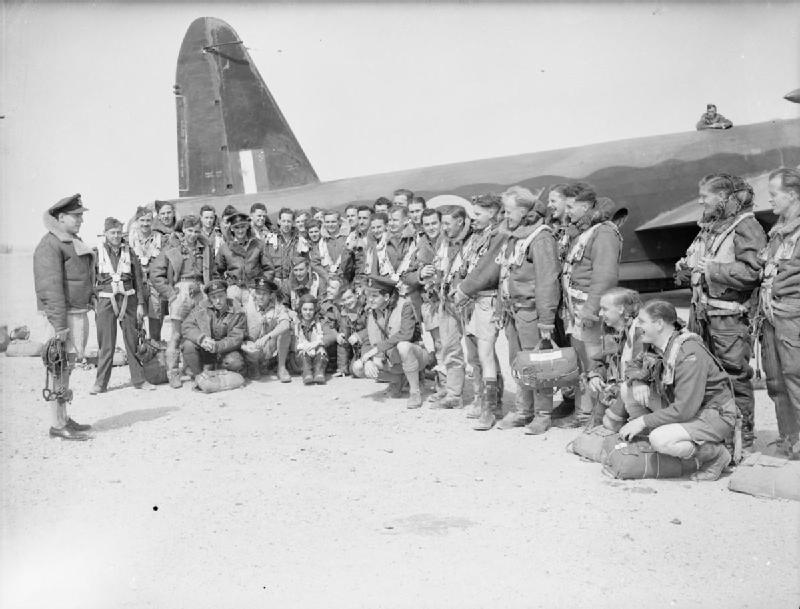It’s been a century since Niagara-on-the-Lake’s iconic clock tower cenotaph was erected. Then, in 1926, the Township of Niagara unveiled its own memorial in Queenston. In recognition of those who fought and died in two world wars and beyond, NOTL historian Ron Dale has been researching the stories of the people – all men – whose names are engraved on the two cenotaphs. This is one in a series of stories documenting and remembering the sacrifices of those commemorated on the municipal memorial in Queenston.
Albert Digby Cooper led a charmed life until fate sought him out on June 16, 1944.
Born on May 29, 1919, in Niagara-on-the-Lake, he was the son of John Digby Cooper and his wife Lorena Elizabeth Burch.
Digby Cooper turned 20 just before the Second World War started and was working at the family farm after finishing school.
He wanted to enlist and hoped he would become a pilot in the Royal Canadian Air Force.
In the summer of 1940, he enlisted in the Royal Hamilton Light Infantry Regiment to receive basic training and he applied for a position in the RCAF on July 4, 1940.
His application was accepted on Dec. 11 and he then went through several courses at a variety of British Commonwealth Air Training Plan facilities across Canada.
From June 9 to Aug. 20, 1941, he trained at an aerodrome in Calgary and earned his wings.
His instructors described him as “a high average pilot. Good service material as he is cool and a very sound pilot.”
He was shipped to England in September and for the next several months was assigned to Operational Training Units to receive more training on a Wellington bomber to prepare him for combat.
Cooper was sent to North Africa to fly for 108 Squadron of the Royal Air Force, arriving in Cairo on April 23, 1942.
Between June 26 and Dec. 8, he flew 43 combat missions. Each time his twin-engine Wellington lifted off the runway there was a severe risk of not making it back from a mission.
However, through skill and luck Cooper always brought his crew safely back to base.
On Nov. 3, 1942, when returning from a mission, his aircraft developed engine trouble and lost altitude. It was a dangerous situation, but he was able to land the plane in the desert.
His crew suffered no injuries. The men had to walk back to their base, earning them an induction into the “Order of the Winged Boot.”
This unofficial order honoured men whose planes were shot down or forced down and whose crews evaded capture and returned to base.
During the Second World War it was determined that the effectiveness of a pilot was compromised when a man had risked his life too many times.
In the RAF and RCAF, the crews were expected to complete one tour of duty, flying 30 missions and often a second tour of 20 missions, after which the pilots would be assigned to non-combat duties.
This was the case with Cooper.
In January 1943, with 43 combat missions under his belt, Cooper was sent back to England to take up new duties as a pilot instructor.
He reported to Number 10 Operational Training Unit to update his training on multi-engine aircraft and then to No. 3 Flying Instructor School in July 1943.
On completion of that course, he was commissioned as a pilot officer on July 30. He was assigned to Number 22 Operational Training Unit to train new pilots in the tactics used on bombing missions.
For the next year Pilot Officer Cooper flew Wellington bombers over the English countryside with crews including newly qualified pilots. They learned to improve their skills in formation flying, map reading, and evasive manoeuvres, all in preparation for flying combat missions over Europe.
On June 16, 1944, while flying a training mission out of Wellesbourne Airdrome in Warwickshire, Cooper’s luck ran out.
Through a combination of circumstances, including an altered flight plan, navigational errors and incomplete meteorological reports, his Wellington flew into cloud, several miles from the correct course that the pilot believed he was following.
It is unknown if Cooper or a student pilot was at the controls.
As the crew reduced altitude to land at Crosby airbase, unaware that they were more than 40 kilometres off course, a high point of land known as Red Pike in the Cumberland Hills loomed in front of the plane.
It was too late to pull up and fly over it. The plane crashed just below the summit, killing all eight men on board.
Pilot Officer Arthur Digby Cooper lies buried at the Blacon Cemetery in Cheshire and is commemorated on the township war memorial in Queenston.










